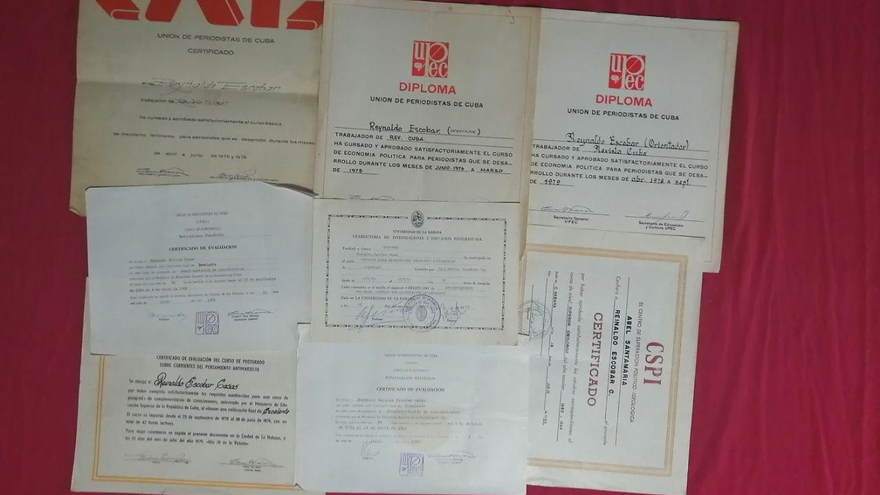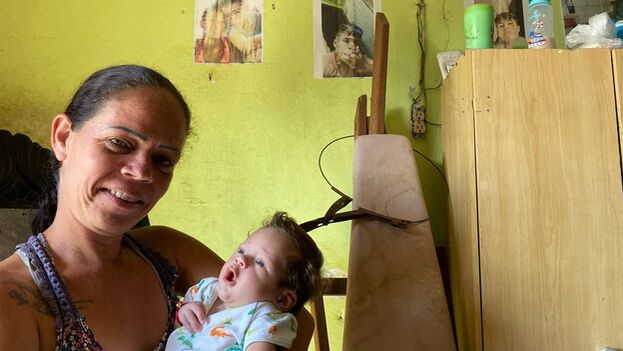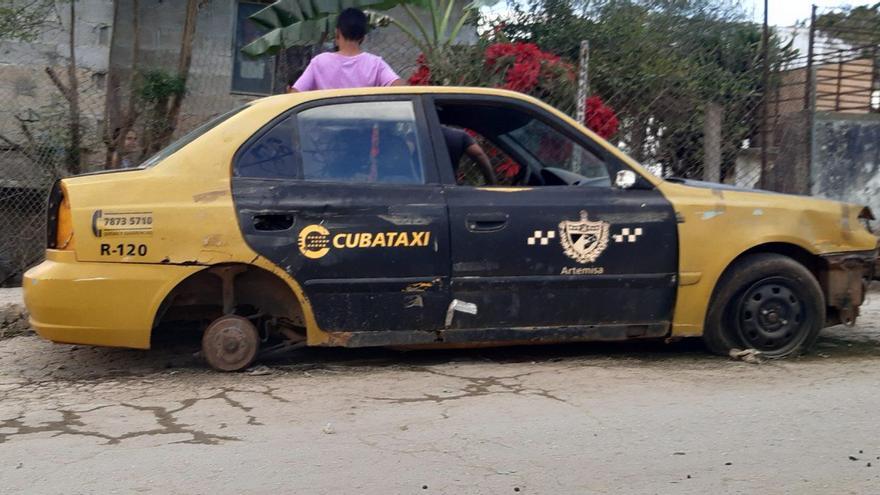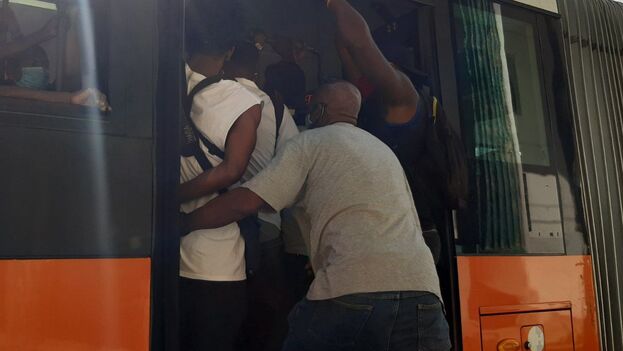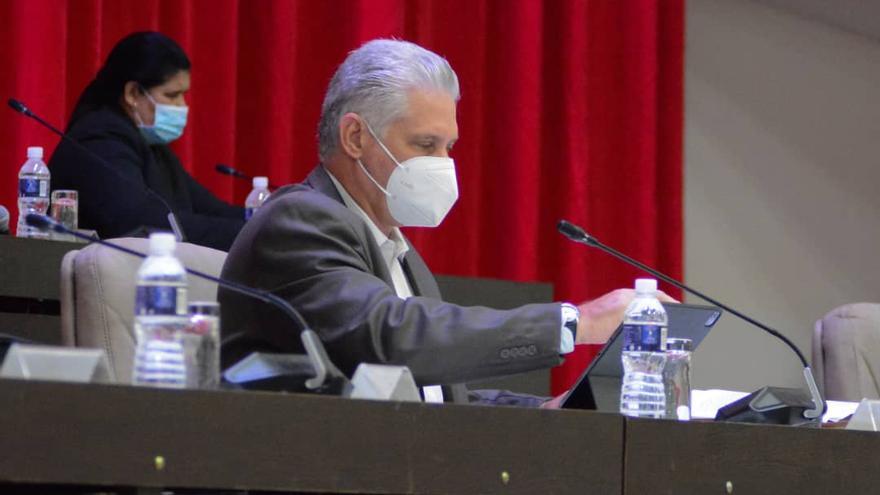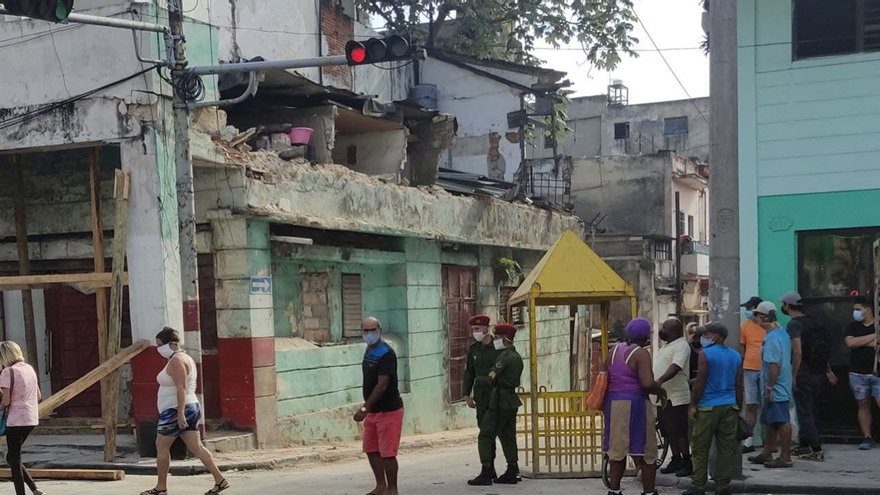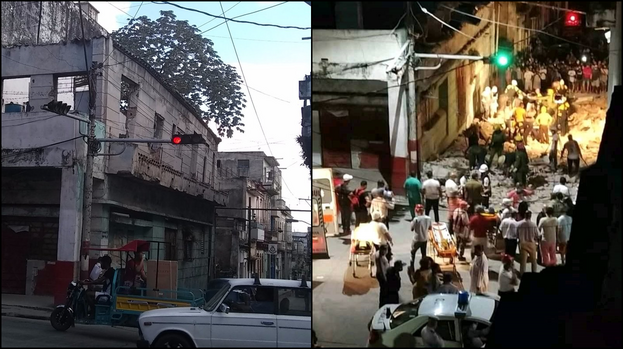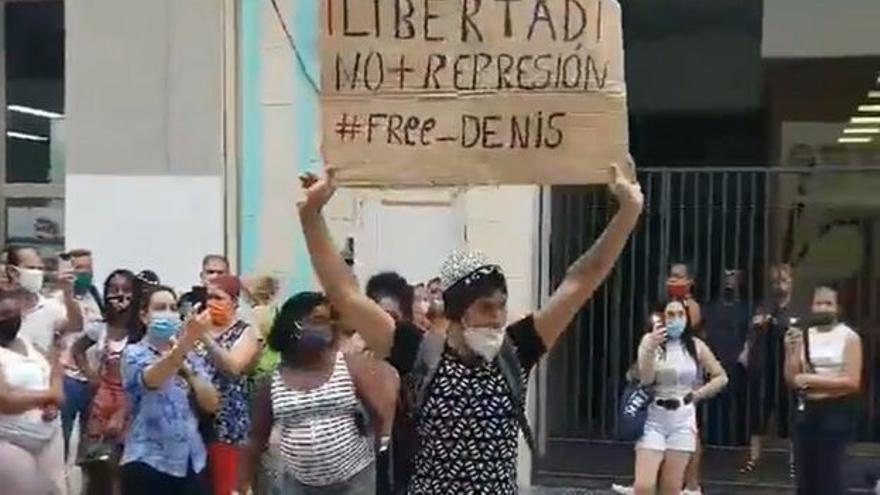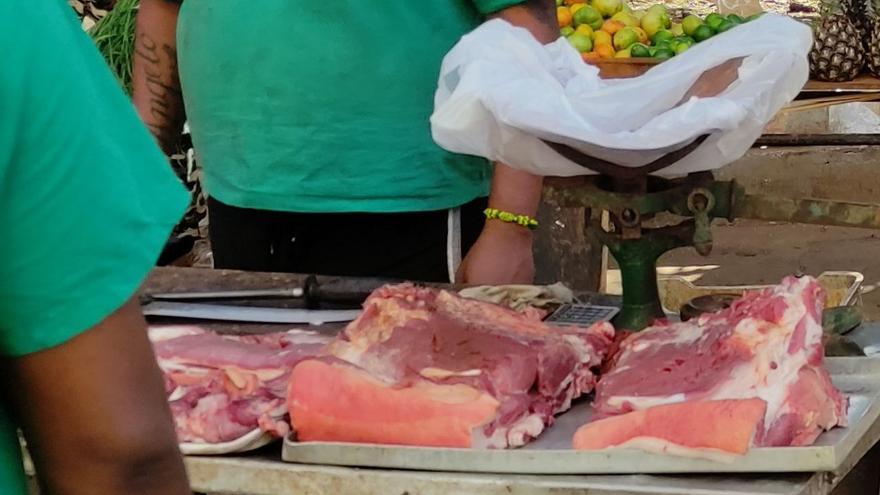Bárbara Farrat, Torres’s mother, abandoned the hunger strike that began three days ago this Monday night to demand her son’s freedom; he has been in prison since August 13th accused of attack, public disorder and spread of epidemic for having thrown a stone at the police without hitting anyone.
The young grandmother, who has become one of the most active faces in defense of the 11J prisoners, has said that she abandoned the strike because of her own mother, who suffered a spike in blood pressure yesterday that was about to cause a stroke, according to Farrat.
“I will not continue to worry about my mother. Her only grandson is in prison. I will not leave my mother fearing that she will have to bury a child,” she said in a video broadcast on social networks. continue reading
The young grandmother, who has become one of the most active faces in defense of the 11J prisoners, stated that she abandoned the strike because of her own mother, suffered a spike in blood pressure yesterday
The hunger strike was abandoned two days after Farrat, just 33 years old and suffering from health problems herself, received 14ymedio at her home, where she resides with her husband, Orlando Ramírez, and her son’s girlfriend – her grandson’s mother – who is 16 years old. The Havana woman, who never imagined that what life has handed her could be possible, told this newspaper what life’s been like in the last four months, with her son imprisoned and the constant pressure from State Security. She also regrets that Torres has only been able to enjoy his baby, born October 27th, “one half an hour at a time during the three visits he has had.”
Farrat declares that her son was caught up in the tumult of that day by chance. That Sunday, when Torres turned 17, the family was celebrating at home, but they ran out of drinks and her husband went out to buy something to continue the party. “We had the music on and hadn’t seen either the newscast or the information from Díaz-Canel saying that the combat order had been given,” she says.
At one point, she relates, the street “began to fill with people coming down the entire Diez de Octubre Boulevard,” a very scary situation, so she decided to go out and look for her partner. Torres, however, dissuaded her and asked her to stay home with his girlfriend, who was pregnant at the time, while he was busy looking for his stepfather (“although he calls him dad because he raised him his whole life”).
On Serafines Street, Torres found Ramírez, hidden behind a wall. “Up the street from Serafines, the police would not let anyone pass,” says Farrat. “Someone among the protesters said that the objective was to reach the Plaza de la Revolución and the officers stood on the Vía Blanca warning that no one else was going to go any further. It was at that moment that the shots and stones began,” he continues.
“Someone among the protesters said that the objective was to reach the Plaza de la Revolución and the officers stood on the Vía Blanca warning that no one else was going to go any further”
He has already related several times what happened next: on Friday, August 13th, two agents of the Technical Directorate of Investigation appeared at the door of his house and took Jonathan Torres, whom they had identified in one of the videos broadcast in networks on the day of the demonstrations.
At that moment, he began his ordeal. Three hours after they took him away, she learned that he was not in the Acosta police unit, as the officers had told him, but in Aguilera, where she went with his son’s girlfriend. It was not until Monday, as he was finally transferred to the station, when he was first told that he was accused of public disorder, spread of epidemic and attack.
The instructor at that time showed the video in which Torres appears throwing a stone, but it can also be seen, he says, that it is the same stone that the police had thrown at the protesters. “He threw it and it fell 50 meters from where the policemen were standing, and it did not hit a patrol car nor hit anyone, it just fell on the street” says Ramírez.
After 14 days, her son phoned to say that he had been transferred to the Manto Negro prison in Havana, a former women’s prison converted into a prison for minors.
Farrat says that it has been “an odyssey” to face this criminal process, because initially they did not even want to give her her son’s file number. She then sought the advice of a family lawyer, who, since he took over the case, has already unsuccessfully requested six changes to the pre-trial detention measure that keeps the adolescent in jail, “He filed a seventh, which of course they will also deny him. By this Monday, December 13th, my son will have been in detention for four months and does not even have a petition from the prosecutor,” she protests.
Farrat has also denounced that her son, who suffers from coronary hypertrophy, has not had access to his medications for two months. “They not only wanted to play with my son’s freedom, but they were also playing with his life,” she came to denounce on the networks.
She too is not taking the medications she should be taking. She is HIV-positive, and, like her husband, has not taken her retroviral since August
She too is not taking the medications she should be taking. She is HIV-positive, and, like her husband, has not taken her retroviral since August. “I have been very busy and nervous with my son’s case, and although I have the medicines, I have not taken them,” she confesses. “I feel guilty that he is in prison, I can’t get it out of my head that I’m the one who should be in jail, and this is a way that I have found to punish myself,” she says confusedly, by way of explanation, crumbling into tears.
The pressure she has received from State Security is also affecting her health. Last Friday, when she returned from visiting her son, she saw the officer who has questioned her several times hanging around the neighborhood, without knocking on her door, but talking to her neighbors, whom, she believes, they intend to intimidate into “informing” about her and her family.
“I got sick, my husband had to take me to the hospital at midnight because I started with an asthma attack,” she says. The agent “had already been here on Wednesday with his threats, telling me that if I continued making complaints on social networks, he was not going to let me in to see my son.”
Orlando Ramírez intercedes: “The exact words were that he had been called by the head of State Security that runs the Western youth prison to tell him that, if his mother continued to make these publications talking about her son, it was very possible that she would not be allowed any more prison visits to him again.” The stepfather replied to the agent, whom he reminded that they could not question the boy without having his family or his lawyer close by.
Ramírez points out that Torres was offered a sentence reduction – “up to seven years” – if he “cooperated… Our politics, our ideology, are outside of him.”
“They told my son: if you can stop your mother from posting anything on social media, I’m going to give you calling privileges,” Farrat continues. “He only replied that he did not want privileges, that he only wanted what is rightly his: ‘The two calls that I get a week, I do not want anything I’m not entitled to.’ As for my mother to stop publishing, she should decide that, not me.”
Bárbara Farrat says that, even if she abandons her hunger strike, she will continue to denounce the government abuses, but she adds that “a single tree does not a forest make and more mothers should join” in her cause
Farrat insists that her son only cares about his baby and his studies, he is in his second year of welding. “It was always clear to him that this decision to be a father so young and while studying could not affect me and my husband, that we are sick,” she says. “He always had our support, but he also understood that it was his responsibility, as it was my responsibility when I decided to have him when I was young. He often would leave school to sell bread, to be able to buy clothes for his little one.”
Bárbara Farrat says that, even if she abandons her hunger strike, she will continue to denounce the government abuses, but she adds that “a single tree does not a forest make and more mothers should join” in her cause.
“I know well that as a people we matter little to them” she says, referring to the authorities. “But I have received a lot of support on social media and I know that this pressure can get the government to give me an answer about my son.
Translated by Norma Whiting
____________
COLLABORATE WITH OUR WORK: The 14ymedio team is committed to practicing serious journalism that reflects Cuba’s reality in all its depth. Thank you for joining us on this long journey. We invite you to continue supporting us by becoming a member of 14ymedio now. Together we can continue transforming journalism in Cuba.
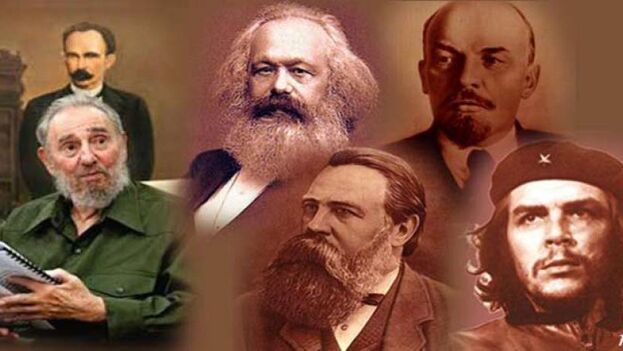
![]() 14ymedio, Reinaldo Escobar, Desde Aqui, Havana, 20 December 2021 — In the dilemma of changing the model to save the country or sinking the country in order to save the model, those who rule Cuba seem to opt for the latter. That is the feeling left by the recent public statements promoting a return to Marxist-Leninist doctrine, not only in the academic environment but also in the practical application of the theory, economically, politically and socially.
14ymedio, Reinaldo Escobar, Desde Aqui, Havana, 20 December 2021 — In the dilemma of changing the model to save the country or sinking the country in order to save the model, those who rule Cuba seem to opt for the latter. That is the feeling left by the recent public statements promoting a return to Marxist-Leninist doctrine, not only in the academic environment but also in the practical application of the theory, economically, politically and socially.